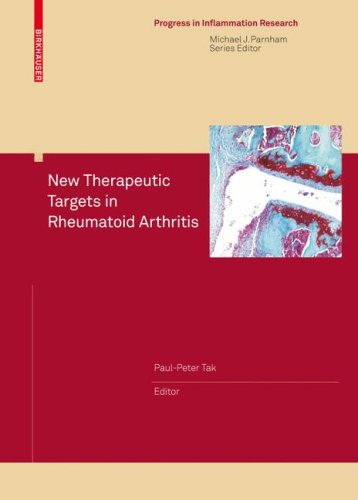

Most ebook files are in PDF format, so you can easily read them using various software such as Foxit Reader or directly on the Google Chrome browser.
Some ebook files are released by publishers in other formats such as .awz, .mobi, .epub, .fb2, etc. You may need to install specific software to read these formats on mobile/PC, such as Calibre.
Please read the tutorial at this link: https://ebookbell.com/faq
We offer FREE conversion to the popular formats you request; however, this may take some time. Therefore, right after payment, please email us, and we will try to provide the service as quickly as possible.
For some exceptional file formats or broken links (if any), please refrain from opening any disputes. Instead, email us first, and we will try to assist within a maximum of 6 hours.
EbookBell Team

0.0
0 reviews
ISBN 10: 3764382376
ISBN 13: 978-3764382377
Author: Paul Peter Tak
During the past decades important breakthroughs have been made in the treatment of rheumatoid arthritis (RA). First, the implementation of low-dose methotrexate and other conventional disease-modifying anti-rheumatic drugs was introduced as an effective treatment. Second, it was recognized that early immunomodu- tory treatment is crucial for controlling the disease and its long-term destructive effects more effectively. Parallel advances in research on the pathogenesis of RA and cytokine biology converged in identifying tumor necrosis factor (TNF) as a key factor in inflammation and matrix destruction. The concept arose that elevated TNF concentrations at the sites of inflammation were driving disease pathology, and the removal of excess TNF from sites of inflammation became a therapeutic goal. Clearly, TNF blockade has revolutionized the treatment of RA, as well as other immune-mediated inflammatory diseases. Anti-TNF treatment results in cli- cal benefit in a significant proportion of the patients, and it has provided proof of concept for the principle of targeted therapy. Despite the impressive disease-modifying effects of the TNF blockers, not all patients respond, and patients who exhibited an initial response may lose response due to the development of anti-drug antibodies (human anti-chimeric antibodies and human anti-human antibodies, respectively) and perhaps as a result of escape mechanisms related to the disease process. In fact, the majority of the patients still have disease activity in at least one or two actively inflamed joints.
Chapter1 : Introduction
Chapter 2: Content
Chapter 3: Conclusion
Chapter 4: Appendices
Chapter 5: Glossary
Chapter 6: References
Chapter 7: Index
new therapies for rheumatoid arthritis
new treatments for rheumatoid arthritis 2021
new rheumatoid arthritis drug 2021
new treatments for rheumatoid arthritis 2022
what is the new rheumatoid arthritis drug